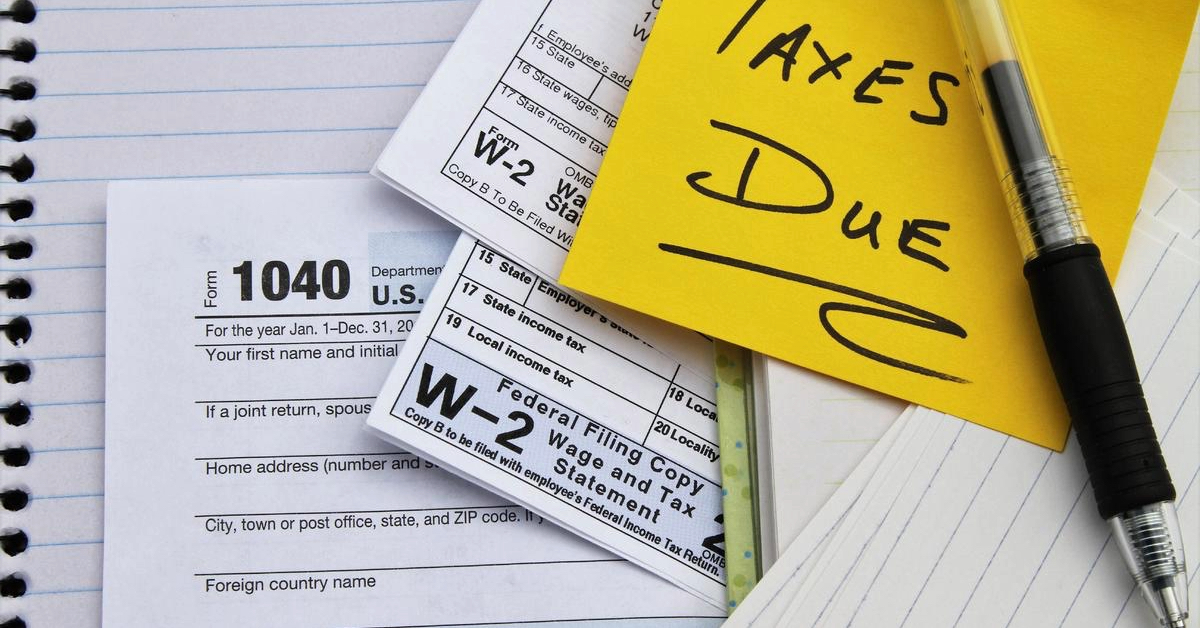Filing taxes can be a real pain, especially when you have foreign financial assets to report. But don’t worry, we’re here to help you understand Form 8938, also known as the Statement of Specified Foreign Financial Assets. This form is a crucial part of tax compliance for many Americans with overseas investments.
Form 8938 is one of those forms that often trips people up. But it doesn’t have to be that way. With the right guidance, you can handle this form confidently and timely file it to stay on the right side of the IRS.
Let’s break down Form 8938 and cover who needs to file, what assets to report, and how to avoid common pitfalls that could lead to penalties. You’ll want to pay attention to these tax return requirements since the consequences for getting it wrong can be steep.
Key Takeaways:
- Filing Criteria: Only individuals who meet specific asset thresholds based on their filing status and residence (U.S. or abroad) need to file Form 8938.
- Reportable Assets: Includes foreign financial accounts, stocks, partnership interests, mutual funds, and certain insurance contracts. Direct real estate ownership abroad isn’t reported unless through a foreign entity.
- Valuation and Filing: Assets must be valued at their maximum during the tax year in U.S. dollars. Form 8938 is filed with the annual tax return.
- Penalties: Failing to file can result in penalties starting at $10,000, increasing with non-compliance, plus potential additional penalties for underreported income.
- FBAR Distinction: Form 8938 and FBAR are different; FBAR has lower reporting thresholds and covers only foreign bank accounts, requiring separate filings.
Who Needs to File Form 8938?
First, let’s determine if you even need to file Form 8938. Not everyone with foreign assets needs to submit this form, but if you meet specific criteria, you’ll need to include it with your annual return.
Reporting Thresholds
The IRS has specific thresholds for reporting foreign financial assets. These thresholds vary depending on your filing status and if you live in the U.S. or abroad. Here’s a breakdown:
| Filing Status | Living in the U.S. | Living Abroad |
|---|---|---|
| Single or Married Filing Separately | $50,000 on the last day of the tax year or $75,000 at any time during the year | $200,000 on the last day of the tax year or $300,000 at any time during the year |
| Married Filing Jointly | $100,000 on the last day of the tax year or $150,000 at any time during the year | $400,000 on the last day of the tax year or $600,000 at any time during the year |
If your foreign financial assets exceed these thresholds, you’ll need to file Form 8938. But remember, these are just the basic guidelines. There are some nuances to be aware of.
For instance, if you’re living abroad, you need to meet the substantial presence test or be a bona fide resident of a foreign country to qualify for the higher thresholds. These filing requirements aren’t just about your location on a particular day.
What Assets Need to Be Reported?
Now that we’ve established who needs to file, let’s discuss what exactly to report on Form 8938. This is where things can get a bit tricky, so pay close attention.
Specified Foreign Financial Assets
Form 8938 requires you to report specified foreign financial assets. Let’s provide a quick rundown:
- Financial accounts held at foreign financial institutions.
- Foreign stock or securities not held in a financial account.
- Foreign partnership interests.
- Foreign mutual funds.
- Foreign-issued life insurance or annuity contracts with cash value.
- Foreign hedge funds and domestic entities like private equity funds.
It’s important to note that some assets you might think should be reported don’t need to be. For example, foreign asset real estate held directly (not through a foreign entity) isn’t reportable on Form 8938. However, if you own foreign real estate through a foreign entity, things get more complicated.
Valuation of Assets
Determining your foreign assets’ value is crucial for Form 8938. The IRS wants to know your assets’ maximum value during the tax year, which isn’t always straightforward, especially for assets that fluctuate in value.
You’ll typically use the year-end account statements to determine the maximum value for financial accounts. For other assets, you might need to use the fair market value. If the asset is denominated in foreign currency, you’ll need to convert it to U.S. dollars using the Treasury’s Financial Management Service foreign currency exchange rate.
How to File Form 8938
Alright, now that we’ve covered who and what, let’s get into how. Filing Form 8938 isn’t as daunting as it might seem, but you need to be careful.
Step-by-Step Guide
Here are the basic steps on how to file Form 8938:
- Gather all the necessary documentation for your foreign financial assets.
- Download Form 8938 from the IRS website.
- Fill out Part I with your personal information and filing status.
- Complete Part II if you have foreign account deposits or custodial accounts.
- Fill out Part III for other foreign financial assets.
- If applicable, complete Part IV for assets reported on other forms.
- Double-check all information for accuracy.
- Attach Form 8938 to your Form 1040 and file them together by the timely file date.
Remember, Form 8938 is filed with your annual tax return. It’s not a standalone form like the FBAR (which we’ll discuss later).
Common Mistakes to Avoid
Many people make the same mistakes with Form 8938. Here are a few pitfalls to watch out for:
- Forgetting to report assets that dropped below the threshold during the year.
- Misunderstanding what qualifies as a specified foreign financial asset.
- Incorrectly valuing assets.
- Failing to report assets held jointly with a spouse.
- Not filing Form 8938 because you filed an FBAR (they’re separate filing requirements).
Avoiding these mistakes can save you a lot of trouble (and potentially, a lot of money) later on.
Form 8938 vs. FBAR: Understanding the Difference
One of the most common sources of confusion is the relationship between Form 8938 and the FBAR (Report of Foreign Bank and Financial Accounts). While they might seem similar, they’re two distinct reporting requirements.
Key Differences
Here’s a comparison to help you understand the differences:
| Aspect | Form 8938 | FBAR |
|---|---|---|
| Where to file | With your annual tax return to the IRS | Separately to FinCEN |
| Reporting threshold | Varies based on filing status and residence | $10,000 at any time during the calendar year |
| What’s reported | Broader range of foreign financial assets | Foreign account finances only |
| Penalties for non-filing | Up to $10,000 per violation | Up to $12,921 per non-willful violation, higher for willful violations |
It’s crucial to understand that filing one form doesn’t exempt you from filing the other. Many taxpayers need to file both Form 8938 and the FBAR (learn more about FBAR filing requirements by clicking here).
Penalties for Non-Compliance
It’s important to understand the potential consequences of not filing Form 8938 when you’re required to. The IRS takes these reporting requirements seriously, and the penalties can be severe.
Monetary Penalties
If you fail to file Form 8938, you could face a penalty of $10,000. And if the IRS notifies you about your failure to file and you still don’t submit the form within 90 days, you could get hit with an additional penalty of $10,000 for each 30 days (or part thereof) that the form is late, up to $50,000.
If you underreport your gross income from foreign financial assets, you could face a substantial understatement penalty of 40% on the underpayment.
Extended Statute of Limitations
Failing to file Form 8938 extends the Form required statute of limitations for the entire tax return. The IRS will have six years (instead of the usual three) to assess additional tax if you omit more than $5,000 of gross income from specified foreign financial assets.
This extended period gives the IRS more time to scrutinize your return, potentially leading to additional assessments or audits. Not filing timely has consequences.
Strategies for Compliance
Given the potential penalties applied and extended scrutiny for not filing timely, it’s crucial to stay on top of your Form 8938 filing obligations. Here are some helpful strategies for maintaining tax compliance:
- Keep detailed records of all your foreign financial assets.
- Set up reminders for important tax dates and thresholds.
- Consider using tax preparation software that includes Form 8938.
- Stay informed about changes in international tax laws and reporting requirements.
- When in doubt, consult with a tax guide or professional experienced in international tax matters like Dimov Tax.
Remember, it’s always better to err on caution. If you’re unsure whether you need to file Form 8938, it’s worth taking the time to figure it out or seeking professional advice.
Let The International Tax Professionals At Dimov Help You
Report foreign financial assets on Form 8938. It’s a crucial part of tax compliance for Americans with foreign financial assets. By understanding who needs to file, what assets to report, and common pitfalls, you can tackle this form confidently.
Form 8938 is more than just another tax form; it helps the IRS combat offshore tax evasion. Taking the time to understand and comply with these reporting requirements helps you avoid penalties and contributes to a fair and transparent tax system.
For more information on this or any international tax-related issues, contact Dimov Tax today.





